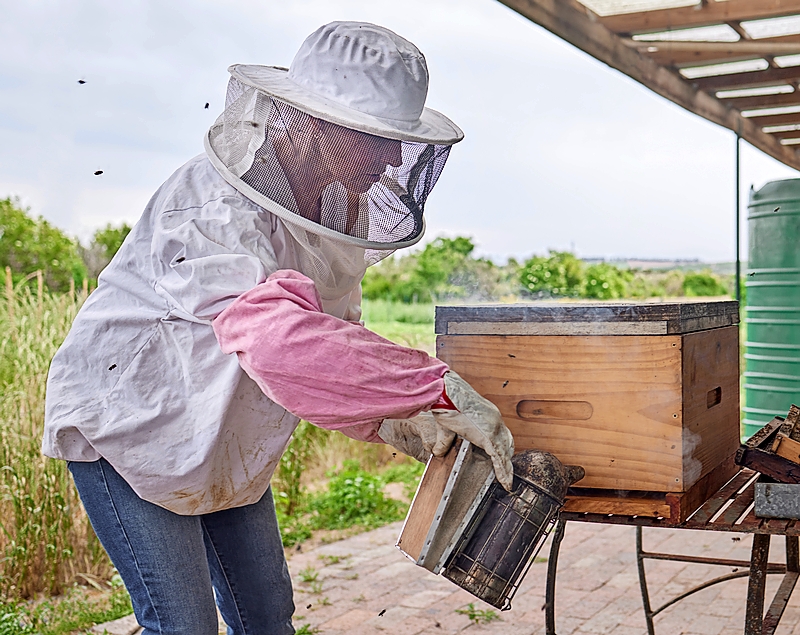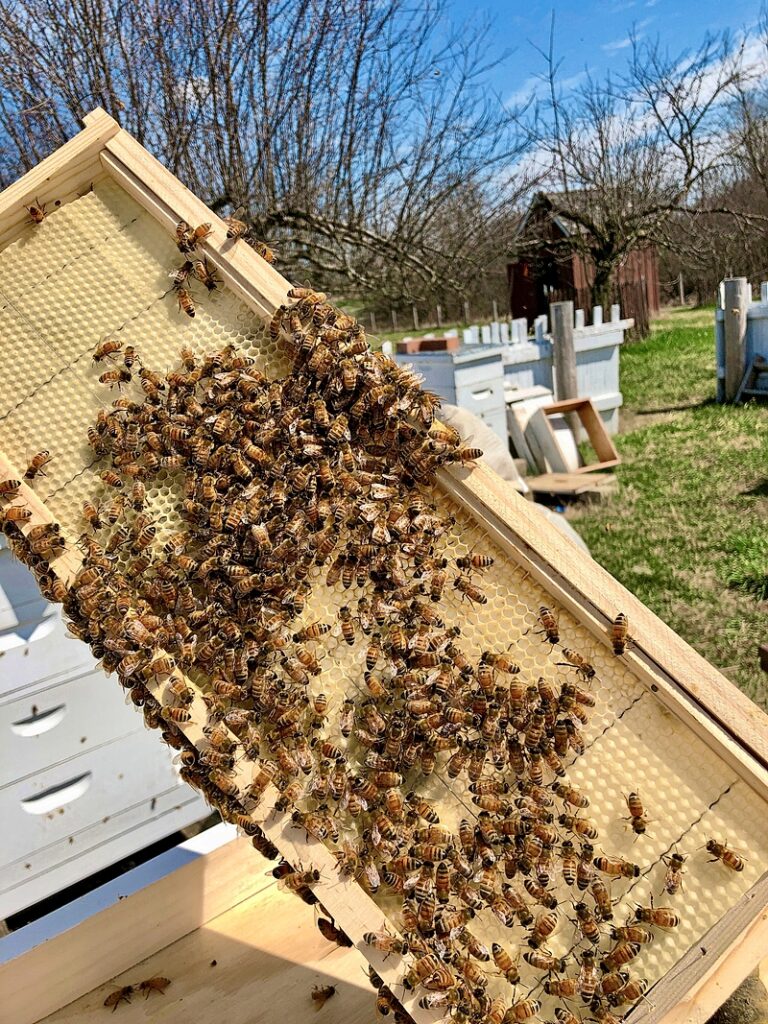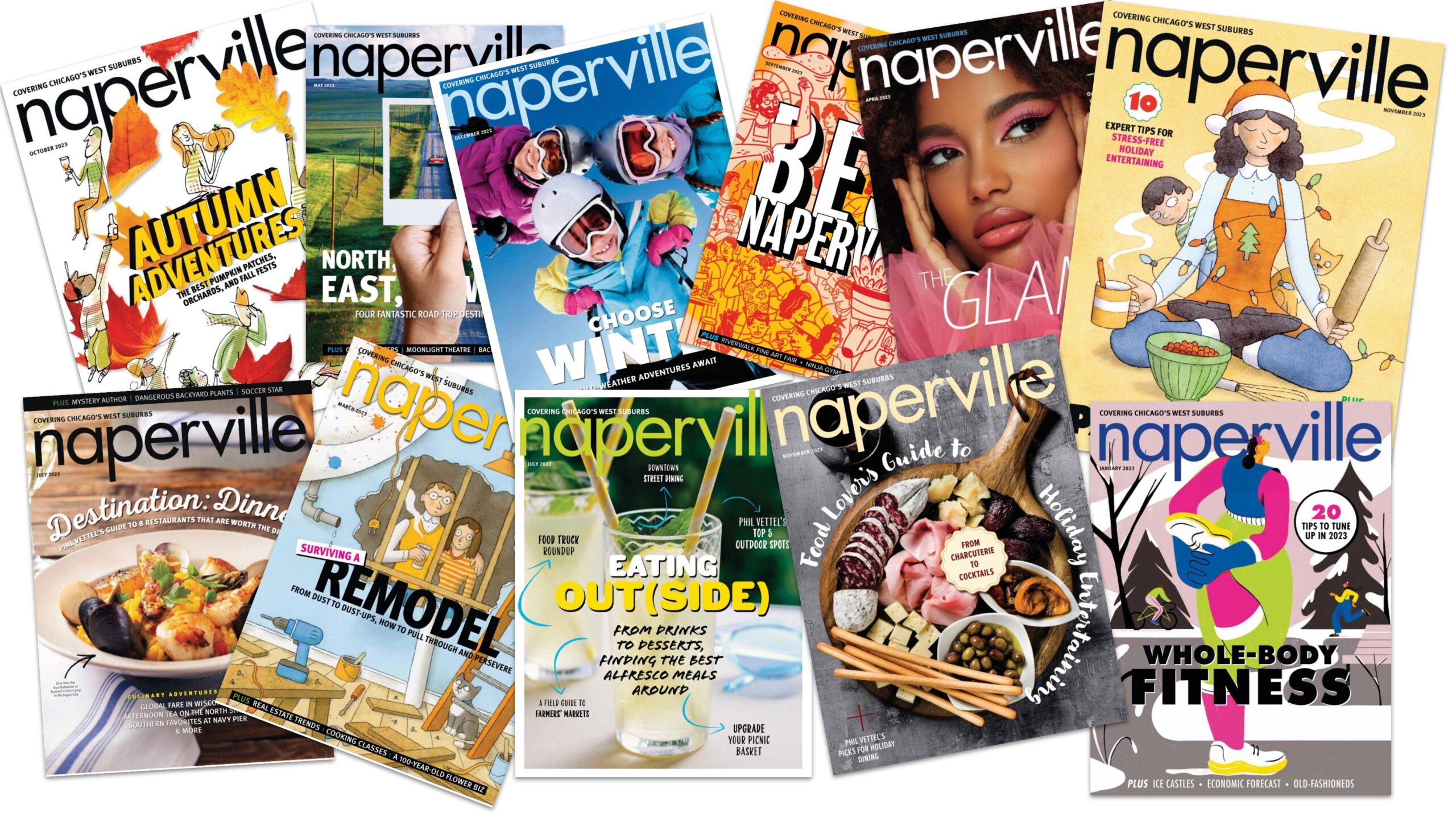Honey of a Hobby
By Mark Loehrke
Appears in the March 2023 issue.
Here’s the buzz on backyard beekeeping

We’d be nowhere without bees.
As pollinators, bees are vital to plant ecosystems—and our food supply. Many crops depend on honeybees for more than 90 percent of their pollination. Bees are crucial for helping wild and managed plants reproduce as well.
For volunteers at Kline Creek Farm in West Chicago—not to mention hundreds of backyard beekeepers throughout the western suburbs—these industrious creatures are intriguing. “The workings of a hive are just fascinating—it’s amazing what these little insects can do,” says Keith McClow, a heritage experience manager with the Forest Preserve District of DuPage County who assists the volunteer beekeeping group at Kline Creek Farm. “Just being able to experience all of that activity firsthand when you open up a hive is such a satisfying experience.”
It’s that sense of wonder, McClow believes, that has attracted so many amateur beekeepers over the years to Kline Creek Farm and beyond. He says most volunteers don’t come in with much experience but instead are there to get a hands-on education so they can start their own apiary at home. Volunteers spend most of their time in the honey house, doing everything from building hives to extracting honey to making candles from the wax.
Many volunteers also work with forest preserve staff on programs for schools and other groups. McClow says these types of educational opportunities are instrumental in raising awareness about the importance of bees, demonstrating how hives work, and getting people involved in home beekeeping, which can be a rewarding experience—provided you know the demands and potential pitfalls going in.
“It’s not as easy to raise bees now as it used to be,” he explains. “In addition to being more expensive, it’s also more complicated due to the various diseases and parasites threatening the honeybee population these days.”

Bees have needs in every season. Spring is the time to build hives and stock up on bees to get those hives going (a package of 15,000 or so bees will run anywhere from $150 to $175). The queen will lay eggs as the weather heats up, and a hive may expand to 100,000 bees as the summer progresses, with honey ready to be extracted by late summer. And as temperatures cool in the fall and winter months, the bees’ nutrition will need to be supplemented, and the hive protected. Typical starting costs for basic hive materials, protective clothing, and a smoker run about $200 to $300.
For those looking to enjoy a little homegrown garden pollination or hyperlocally produced honey—McClow offers the following tips:
• First and foremost, check local ordinances to make sure bees can be kept in your area. Although honeybees are not aggressive, talk to neighbors to make sure they’re comfortable with more buzzing around.
• Join a group like the Cook-DuPage Beekeepers Association (cookdupagebeekeepers.com) for ongoing education and commiseration. “Every single person has faced the challenges that you might face and can offer suggestions,” McClow notes. The association has a handy month-by-month list of tasks on its website.
• Manage your expectations. First-year hives may not produce much honey, and environmental stresses may result in some lost bees or even full hives in the early going. So be patient.
Photos courtesy of Forest Preserve District of DuPage County (hive frame) and istock


